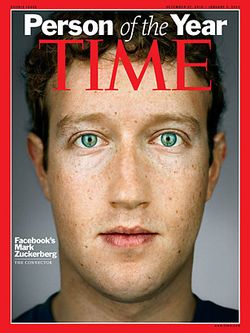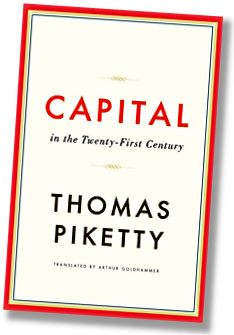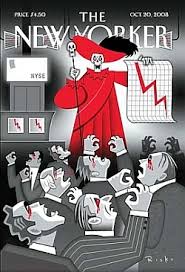 Most economists have absolutely no idea what they’re talking about.
Most economists have absolutely no idea what they’re talking about.
It’s not their fault. They have lacked the data to prove or disprove their theories. So they repeat those theories, year after year, decade after decade, and are surprised when economies don’t fit the theories.
Most of these are industrial age theories. Marx wrote in the 19th century. The Austrian economists wrote in the early 20th century. Their theories are products of their time, the idea that machines generated additional productivity slowly, and that operators would always be required for those machines.
Moore’s Law destroyed all these theories.
There was some recognition of this early-on. In 1971, when early technology pioneers like David Packard were in the Nixon Administration as part of his “California Mafia,” the tie between metals and money was broken. This was called the “Nixon Shock.” It was made absolutely necessary by Moore’s Law. Without it, the deflationary effects of technology improvement would have wrecked the economy. Imagine what gold would cost today if the whole economy had to be floated on it.
But the impacts of Moore’s Law aren’t just cumulative. They are, in many ways, exponential. The impact of clouds-and-devices on productivity are exponential. Imagine. You not only have a supercomputer in every person’s hand, one capable of automating not just office work but entire marketplaces, and these are connected, without wires, to more compute power than we could have dreamed of creating just a decade ago.
 The impact on labor productivity, on the ability of companies to replace people with machines, is simply enormous. And they’re just getting started. The Internet of Things is going to eliminate millions of driving jobs (to name just one example) over the next decade. Truck drivers, cab drivers, Uber drivers, operators of heavy machinery, car insurance adjusters, auto repair shops – they’re all looking to be slowly, but steadily, replaced by computers.
The impact on labor productivity, on the ability of companies to replace people with machines, is simply enormous. And they’re just getting started. The Internet of Things is going to eliminate millions of driving jobs (to name just one example) over the next decade. Truck drivers, cab drivers, Uber drivers, operators of heavy machinery, car insurance adjusters, auto repair shops – they’re all looking to be slowly, but steadily, replaced by computers.
As labor is replaced by automation, the productivity of the remaining labor increases, but the demand for that type of labor disappears. Two things have to happen if you want these people to become, once again, gainfully employed. We need to find them new jobs that computers can’t do. And we need to find them demand for those goods and services.
We have been doing just that, in today’s economy. Chefs, yoga instructors, dog walkers, the whole artisanal food movement, the craft beer movement, personal trainers, all these are jobs made possible by the Moore’s Law economy. The value is created, the value is distributed, and new demand results for new types of work.

Industrial Age economics can’t deal with Moore’s Law. Industrial age economists are still arguing over the Nixon shock. You talk to any conservative investor today and they’ll go on-and-on about “the debt the debt the debt,” claiming the whole economy is unsustainable because money is just an understanding between computer systems. They think money is something you hold in your hand, when in fact it is the movement of value. Money is a verb, and Moore’s Law should be making this obvious by now, a half-century on.
It’s not, mainly, because economists deliberately misread the Thomas Piketty book “Capital in the 21st Century.”
It was read as a political book, and economists argued politics against it. This is all the media reported, this is all that most people learned about it.
It wasn’t a political book. It was a scientific book. Piketty collected data sets going back, in some cases, hundreds of years. He had this data digitized, and he analyzed it for clues on how to operate a rapidly-changing economy. Then he wrote up his results.

But what about the conclusions?
What Piketty found, mainly in analyzing recent data, post Moore’s Law data, data that really shouldn’t be subject to dispute, is that the benefits of technology are growing larger-and-larger, but are flowing to fewer-and-fewer people. This should be obvious to anyone reading the Forbes 400 list. Despite spending all his time trying to give away his fortune, Bill Gates is richer than ever. Value builds on value, money builds on money, wealth builds on wealth, and the only way to get on that train is to create your own billion-dollar company, like Reid Hoffman has at LinkedIn and Elizabeth Holmes has at Theranos, then start building from there. Because otherwise the numbers just won’t grow.
We have a precedent for this. This is what happened near the end of the 19th century, and the start of the 20th century. What liberalism was able to do, through the first half of that century, was to redress that imbalance, first through taxes, then through FDR’s economic experimentation, and finally through the ultimate means of global war. By 1950 wealth was distributed far more evenly than it has been, before or since. A large, growing middle class could demand higher wages, and could spend those wages creating new demands for manufacturers. The new egalitarianism meant there was mass political demand for services, like health services, education services, regulatory services, and social services. The breakdown of that consensus began in the early 1980s, just as Moore’s Law itself was starting to accelerate.

That’s the question for 2016. The election of 2016 will either validate the Obama Thesis, written by the technology industries, stating that the wealth does indeed have to be redistributed so it can become money again, or it will prove a rejection of that Thesis and a return to Industrial Economics, accelerating the wealth concentration effects of technology and creating a world of feudalism to replace the democracy our grandparents enjoyed.
It’s up to you.










